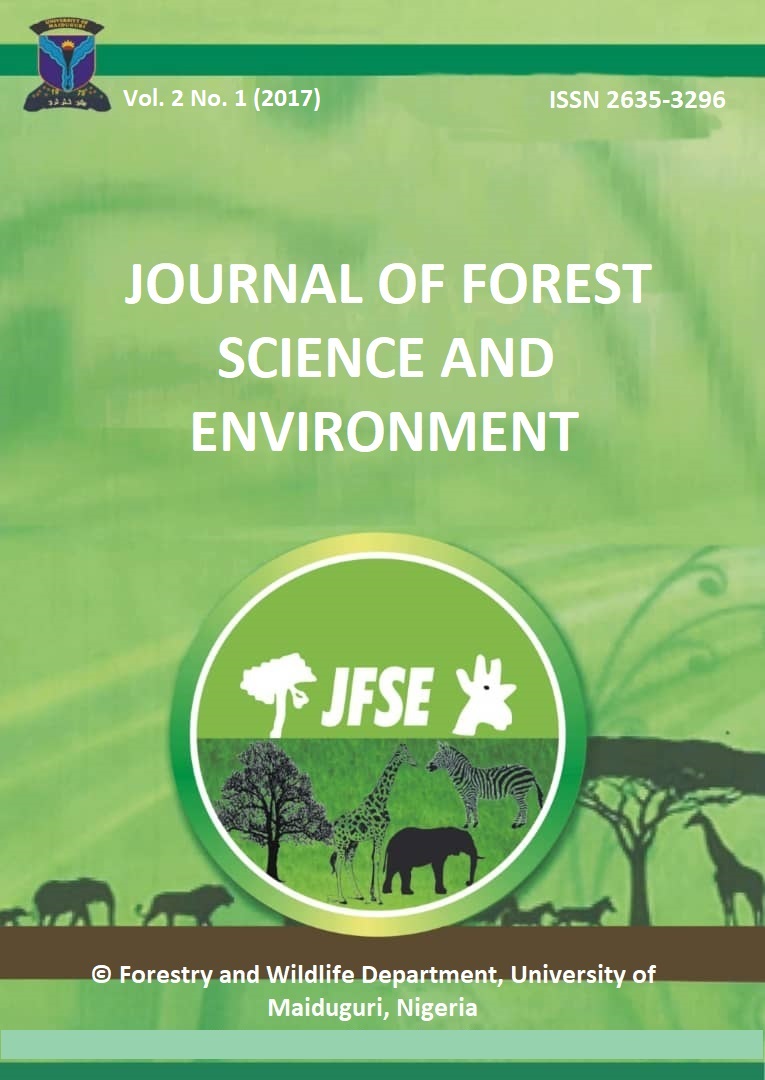Abstract
This study the Population Estimate of Mona Monkey in Oban East Range of Cross River National Park was aimed to estimate the absolute population density, abundance, the activity budget and preference of plant species utilized as food by Mona monkey in Oban East Range of Cross River National Park, Survey was used to collect data. The result revealed that the absolute population density of Mona monkey is estimated to be 2.5 ± 0.7 individual/km2 with co-efficient variation of 20.02 and confidence interval of 3.838 4 – 154.00. The population density of Mona monkey in Oban East Range is relatively low, this might be as a result of some anthropogenic activities, hence need for the intervention of the management of National Park and the Federal Government of Nigeria. Regular monitoring of the population trends of Mona monkey is advocated. This will enable the management of the park to promptly notice any further decline in the population density of the animal and to take drastic actions.
References
Anthony RE, Sinclair MS and Graem (2007). Wildlife Ecology Conservation and Management. Second editions. Blackwell Publishing. ¯
Ayodele IA and Lameed GA (1999). Biodiversity Management. Joachin Publisher, Ibadan. CRNP (2008) An annual report of Cross River National Park, Cross River State, Nigeria
Dunn A (1993). A manual of census techniques for surveying large animals in Tropical Forest. Report for Wildlife Fund for Nature (WWF). UK 1-20.
Estrada A, Dennis MJ and Rosamond C (1993). Foraging by Parrots (Amazonaautumalis) on fruit of sternmadeniadonnel-smithii (Apocycnacea) in the tropical rain forest of Los Tuxtlas, Mexico. Journal of Tropical Ecology Issue 9:121-124. Cambridge University Press.
Field J, Friis I and Vollensen K (2004). Flora of Sudan – Uganda border area East of Nile. Bird Conservation International Vol. 9: pp. 47-62.
Gawaisa SG (1997). The status of large mammals and the impacts of human activities on Gashaka Gumti National Park. Unpublished B.Tech, project, Federal University of Technology, Yola. PP 1-62.
Kaplin BA and Lambert JE (2002). Effectiveness of seed dispersal by Cercopithecus monkeys implication for seed input into degraded areas. In D. J. Levey, W.R. Silva and M. Galetti (eds). CAB International. PP 351-364
Kaplin BA (2001). Ranging behavior of two species of forest guenon (Cercopithecus lhoesti and C. mitisdogetti) in the Nyungwe Forest Reserve.
Laake JP, Buckland ST, Anderson DR. and Buraham KP (1993). Distance. Users guide Colorado Fish and Wildlife Research Unit: Fort Collins: Colorado State University Press.
Lameed GA, Omifolaji JK, Abere AS and Ilori SO (2015). Hunting intensity on wildlife population in Oban sector of Cross River National Park. Natural Resources, 6, 325 Http/dx.dol.org/10.4236/nr2015/4029 – 330.
Lugo AE (1988). Estimating reductions in the diversity of tropical forest species cited in biodiversity, eds E.D Wilson and F.M. Peter Washington D.C: National Academy Press. 1988. Pp 58-70.
Oates JF (1988). The Distribution of Cercopithecus Monkeys in West African Forest. In A. GuntieHion, F. Bourliere, J. F. Gumtier and J. Kingdom (eds) A Primate Radiation Evolutionary. Biology of the African Guenons.Cambridge University press, Cambridge. U. K. Pp 79-103
Oates JF (2011). Primates of West Africa. A field Guide and Natural History Conservation International. USA. Pp. 278 – 527.
Ogunleye OA (2002). An Introduction to Research Method in Education and Social Wilson DE (1988). Maintaining bats for captive studies. In: Ecological and behavioural methods for the study of bats (T.H. Kunz, ed.) Smithsoman Institution Press. Pp 247-264.

